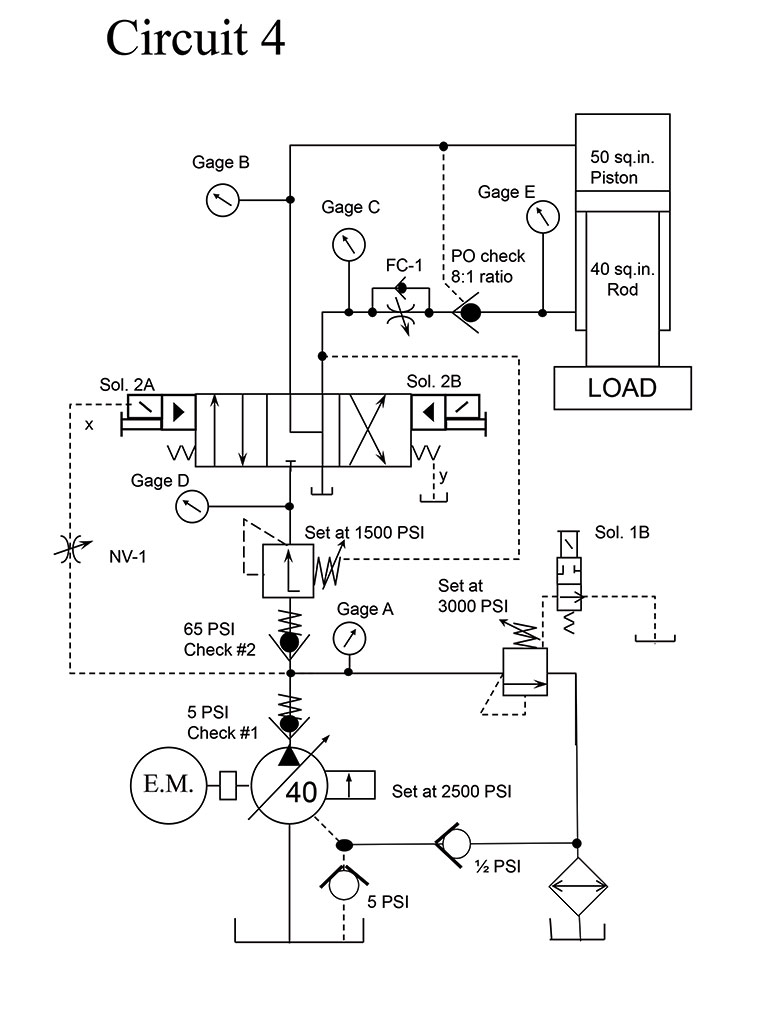By Robert J. Sheaf, Contributing Editor
I use the attached hydraulic circuit in most of my training classes to see how well the students understand what is going on when the press is in neutral, extending or retracting.

The design was used by an OEM who builds several presses. One requirement this particular customer insisted on was using a pilot operated check to hold the ram up when retracted. He had several older presses that drifted down off a limit switch and would consistently “bang” up and drift down on and off the switch. This was caused by the use of slowly leaking counterbalance valves. Here is one of the few cases where a meter-out flow control was used and adjusted to provide enough back pressure to keep the PO check valve open when the press was extended.
I always stress in class that if you can read a schematic and find the actual component on the machine AND understand pressure controls well, you will have a higher success at solving hydraulic problems.
Using this schematic, I have two questions for you to consider:
- First, what approximate pressure would gauge “A” read if only the electric motor was running, and all three solenoids were de-energized?
- Second, what would gauge “E” pressure read if the ram were held retracted with solenoids 1B and 2B are energized and pump pressure output is 2,500 psi?
Solution
The first question was: What approximate pressure would gauge “A” read if only the electric motor was running, and all three solenoids were de-energized?
If solenoid 1B is not energized, the relief would unload at whatever the bias spring pressure rating is, mostly in the 25 to 35 psi range. So, it would theoretically read “25 to 35” psi plus any pressure drop caused by the plumbing size and full pump flow.
The second question was: What would gauge “E” pressure read if the ram were held retracted with solenoids 1B and 2B energized and pump pressure output is 2,500 psi?
All pressure control spring chambers are sensitive to any hydraulic pressure in the chamber. Most are drained to tank. This would be the case when the system is in the neutral and extend function. However, any pressure in the retracted mode is additive to the pressure-reducing valve spring setting allowing full pump pressure to retract the cylinder, thus gauge “E” would read 2,500 psi.
Filed Under: Engineering Basics, Valves & Manifolds